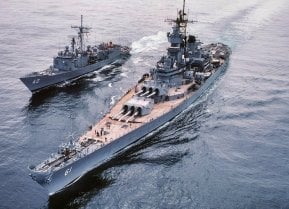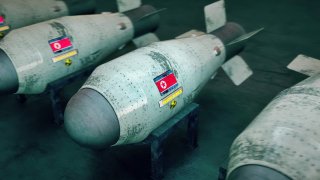What Makes North Korea's Special Forces So Dangerous
North Korea has built an impressive special force capable of waging asymmetrical warfare against better-equipped rivals to compensate for military weakness.
North Korea's Special Forces, Explained: North Korea has a massive military. With 1.3 million soldiers serving on active duty, North Korea has one of the world’s largest armies.
Yet, much of the Korean People’s Army (KPA) is dependent upon out-of-date, Cold War-era, Soviet equipment.
So, while the KPA may have more troops and equipment than their rivals the United States and South Korea, the KPA is significantly outgunned with respect to quality of their forces.
To compensate, the KPA has built an impressive special forces, capable of waging asymmetrical warfare against better-equipped rivals.
North Korea's Special Forces, What We Know
North Korea, severely restrained with respect to resources and finances, has crafted a defense policy that is economically efficient, which “gets the most bang for its buck.” With economic efficiency in mind, North Korea has invested heavily in special forces – believing that special forces give the KPA a strategic benefit without overspending.
The result has been the creation of a special forces understood to include as many as 200,00 highly trained soldiers. KPA special forces have five primary missions: “conducting reconnaissance, performing combat operations in conjunction with conventional operations, establishing a second front in South Korea’s rear areas, countering ROK/US special operations forces in North Koreas’ rear, and maintaining internal security.”
The KPA’s special forces are spread into a variety of light infantry and sniper brigades, distributed throughout North Korea’s Army, Navy, Air Force, and Reconnaissance General Bureau (which is the KPA’s intelligence wing).
What They Can Do In a New Korean War
Most observers expect, that should conflict erupt on the Korean Peninsula, the KPA would full mobilize its special forces, to leverage their asymmetrical capabilities against a foe that would possess stronger conventional forces.
In using special forces, the KPA would likely target areas behind the front lines, perhaps deep within South Korean territory, where KPA special forces would target South Korea infrastructure and personnel.
KPA special forces would likely prioritize the “seizure and destruction” of vital military targets, including airfields, naval bases, port facilities, POL storage facilities, and missile sites. KPA special forces may also be used to interdict the arrival of ROK and US reinforcements and supplies.
The WMD Component
KPA special forces are also equipped to wage psychological warfare against enemy populations. And, as many fear, KPA special forces could be used to deploy the chemical or biological weapons that the KPA has stockpiled.
North Korea has a substantial stockpile of biological and chemical weapons. Concerning biological weapons, North Korea possesses anthrax, smallpox, and cholera. With respect to chemical weapons, North Korea possesses nerve, blister, blood, and vomiting agents.
Estimates place North Korean chemical weapons stockpiles between 2,500 and 5,000 tons – making them one of the world’s largest possessors of chemical weapons. In 2017, it is believed that North Korean actors used a chemical agent, a VX nerve agent, against Kim Jong-un’s estranged older half-brother, Kim Jong-nam. He was assassinated at Kuala Lumpur International Airport in Malaysia.
The international community is acutely fearful that North Korea, in a situation where they felt their regime is at risk of falling, would be willing to use their special forces to deploy weapons of mass destruction. And since both South Korea and the United States possess conventional forces that surpass the KPA’s, any sort of conflict may inherently pose an existential risk to the North Korean regime, hence increasing the likelihood that weapons of mass destruction are deployed.
How They Would Attack
However KPA special forces are used, they will likely operate in civilian attire, or perhaps in ROK or US military uniforms. Dressed to blend in with either the civilian population or enemy forces, the KPA special forces will move surreptitiously, typically in as small of a unit size as possible.
Many teams are expected to operate with as few as three to five personnel – making them, effectively, guerrilla units.
The units will likely carry only a limited amount of equipment, perhaps an AK-47 or M-16 assault rifle, some hand grenades, demolition equipment, rocket launchers. The KPA will likely choose to outfit its special forces units – its most highly trained soldiers – with the best available equipment.
The KPA’s robust special forces provides another disincentive for all-out war with the North Koreans. While South Korea and the US aspire to reunite the Korean Peninsula, and to negate the North Korean threat, the price of open conflict would be astronomical. The KPA’s 200,000 special forces troops, plus the KPA’s conventional artillery, and weapons of mass destruction stockpile, are all reasons why the status quo is likely to endure.
About the Author: Harrison Kass
Harrison Kass is the Senior Defense Editor with over 1,000 published articles. An attorney, pilot, guitarist, and minor pro hockey player, he joined the US Air Force as a Pilot Trainee but was medically discharged. Harrison holds a BA from Lake Forest College, a JD from the University of Oregon, and an MA from New York University. He lives in Oregon and listens to Dokken.
Image Credit: Creative Commons.


